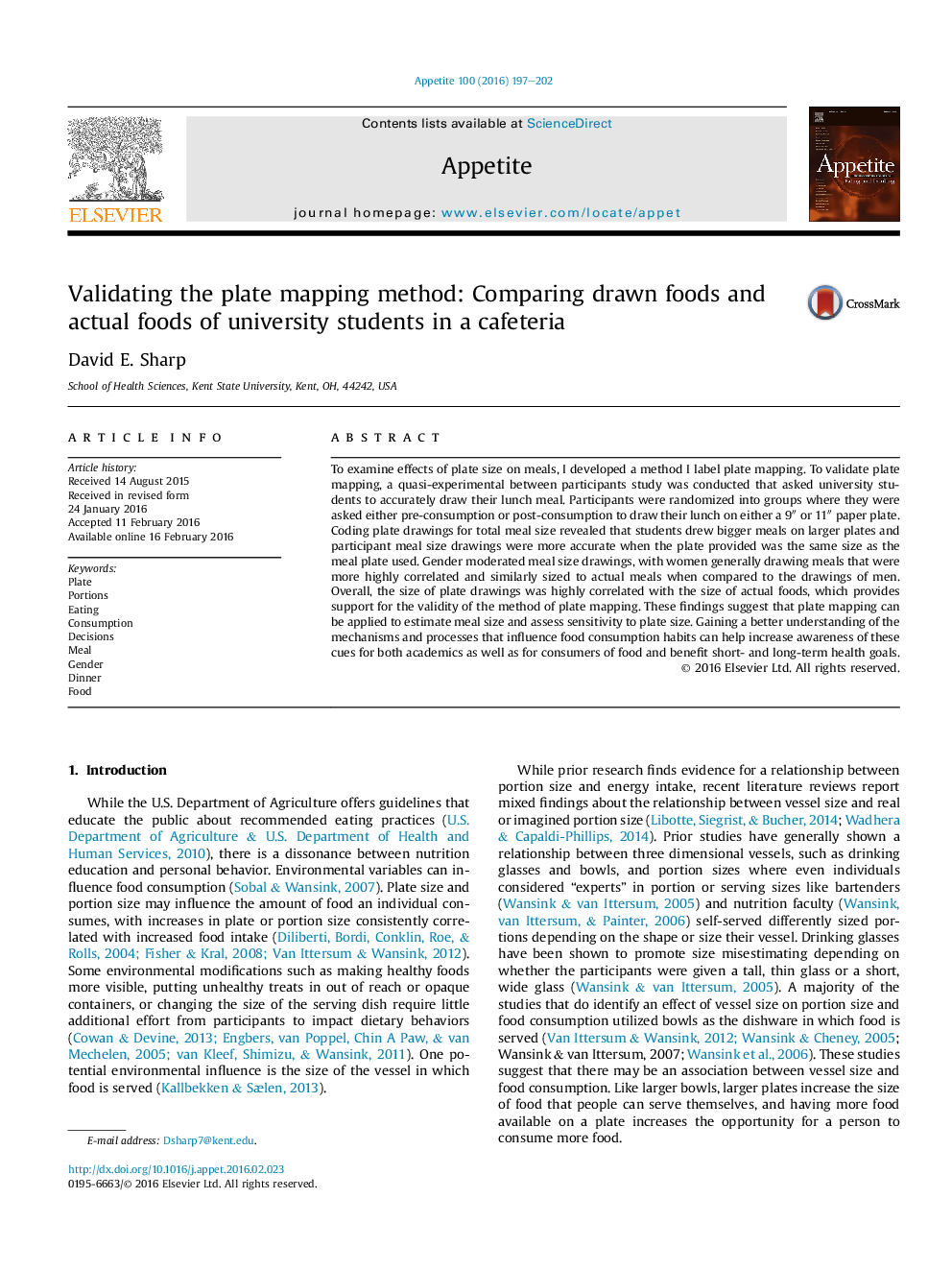| Article ID | Journal | Published Year | Pages | File Type |
|---|---|---|---|---|
| 7307654 | Appetite | 2016 | 6 Pages |
Abstract
To examine effects of plate size on meals, I developed a method I label plate mapping. To validate plate mapping, a quasi-experimental between participants study was conducted that asked university students to accurately draw their lunch meal. Participants were randomized into groups where they were asked either pre-consumption or post-consumption to draw their lunch on either a 9â³ or 11â³ paper plate. Coding plate drawings for total meal size revealed that students drew bigger meals on larger plates and participant meal size drawings were more accurate when the plate provided was the same size as the meal plate used. Gender moderated meal size drawings, with women generally drawing meals that were more highly correlated and similarly sized to actual meals when compared to the drawings of men. Overall, the size of plate drawings was highly correlated with the size of actual foods, which provides support for the validity of the method of plate mapping. These findings suggest that plate mapping can be applied to estimate meal size and assess sensitivity to plate size. Gaining a better understanding of the mechanisms and processes that influence food consumption habits can help increase awareness of these cues for both academics as well as for consumers of food and benefit short- and long-term health goals.
Related Topics
Life Sciences
Agricultural and Biological Sciences
Food Science
Authors
David E. Sharp,
